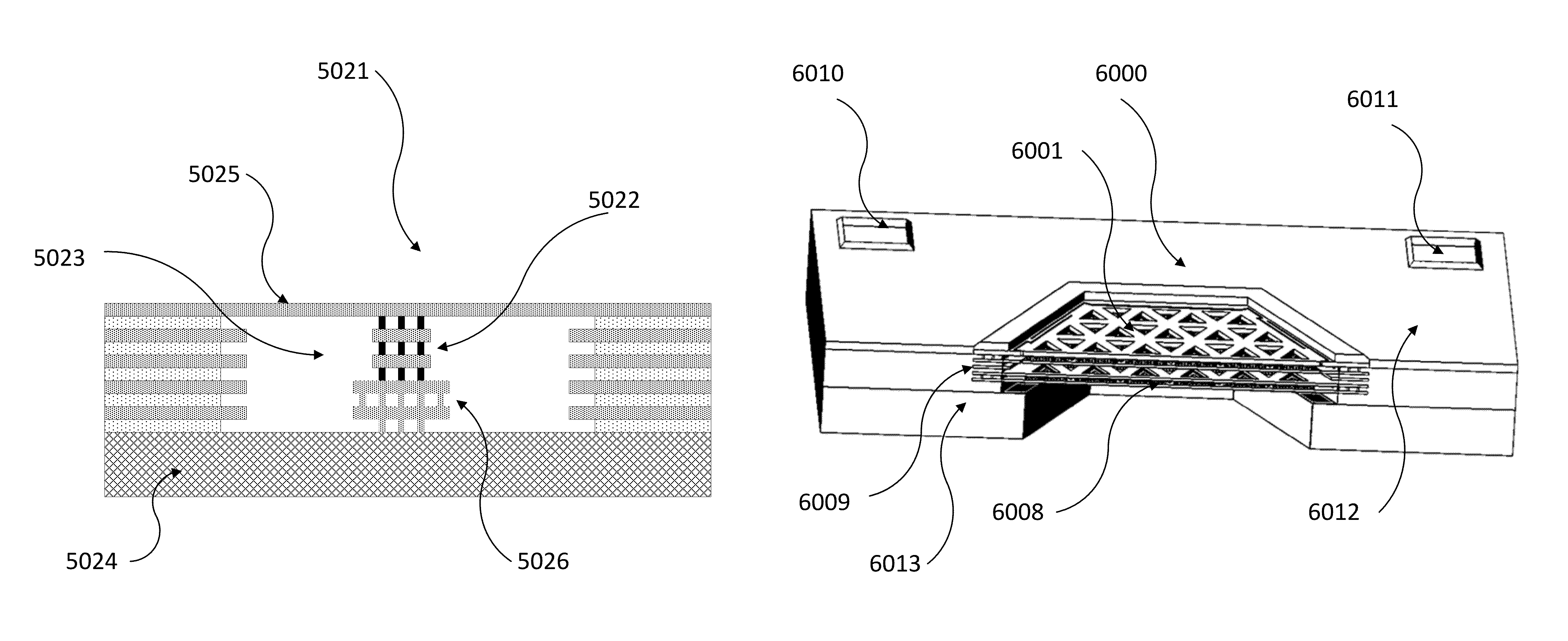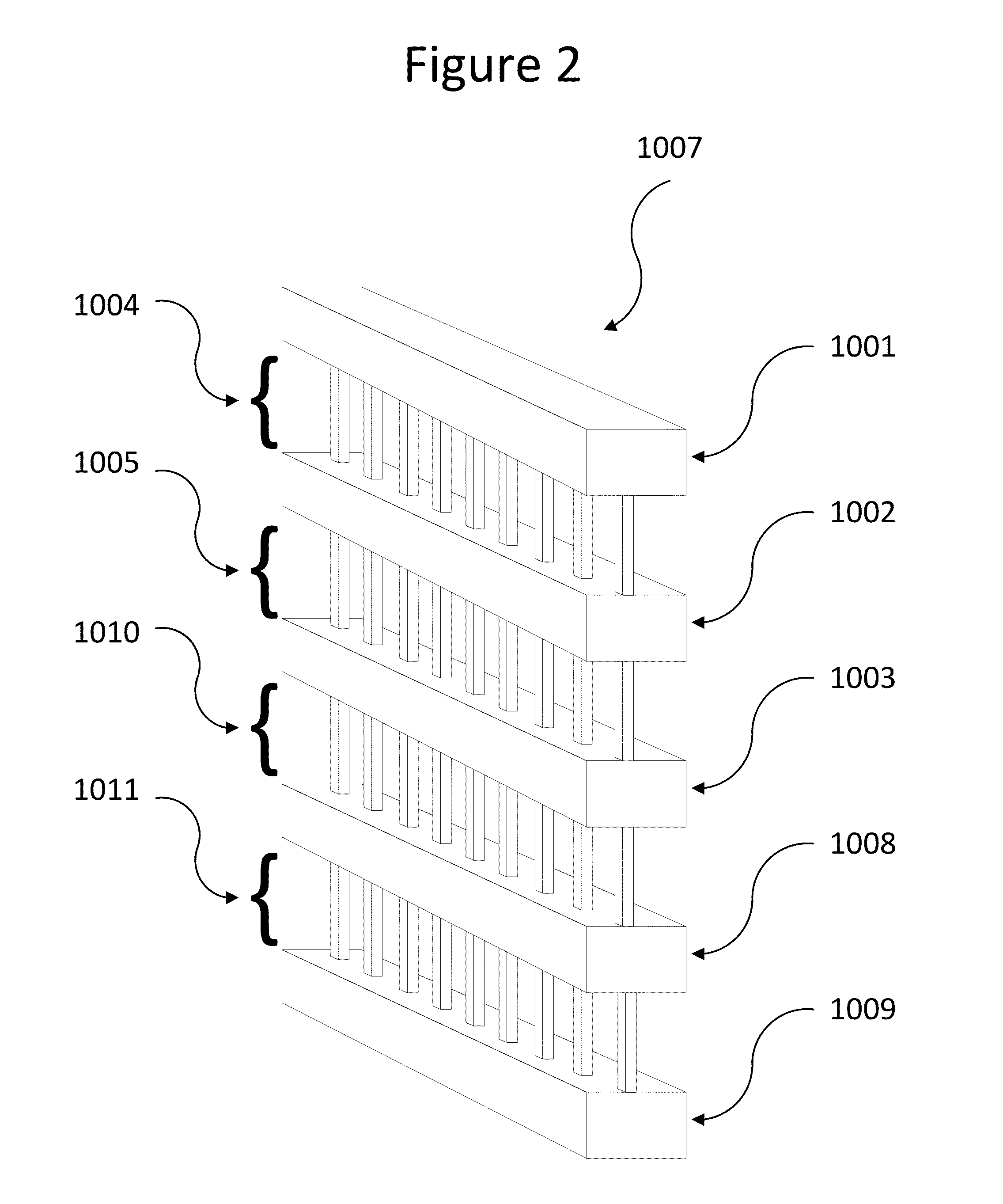Integrated CMOS/MEMS microphone die
a microphone and die technology, applied in the field of microelectronics, can solve the problems of leaving the bonding pads on the top surface unaffected, and achieve the effects of reducing the weight of the device, preventing further upward and preventing further downward movement of the diaphragm
- Summary
- Abstract
- Description
- Claims
- Application Information
AI Technical Summary
Benefits of technology
Problems solved by technology
Method used
Image
Examples
Embodiment Construction
[0041]The following sections set forth numerous specific embodiments taking advantage of various aspects of the invention. These are not intended to be an exhaustive collection of every embodiment of the invention, as embodiments of the invention can be combined in a multiplicity of ways without departing from the principles of the invention.
General Fabrication Techniques
[0042]The embodiments disclosed can be fabricated using standard sub-micron CMOS fabrication techniques known to one of skill in the art, for example:
[0043]1. On the portions of a silicon wafer substrate intended to be populated by transistors, build the transistors using standard CMOS techniques. The portions of the wafer for the MEMS structures remain untouched, leaving the field oxide in this area.
[0044]2. Deposit a layer of SiO2 over the entire wafer.
[0045]3. Apply a patterned mask onto the SiO2 layer with openings for the electrical vias needed for the transistor interconnects and for the vias needed for the st...
PUM
 Login to View More
Login to View More Abstract
Description
Claims
Application Information
 Login to View More
Login to View More - R&D
- Intellectual Property
- Life Sciences
- Materials
- Tech Scout
- Unparalleled Data Quality
- Higher Quality Content
- 60% Fewer Hallucinations
Browse by: Latest US Patents, China's latest patents, Technical Efficacy Thesaurus, Application Domain, Technology Topic, Popular Technical Reports.
© 2025 PatSnap. All rights reserved.Legal|Privacy policy|Modern Slavery Act Transparency Statement|Sitemap|About US| Contact US: help@patsnap.com



